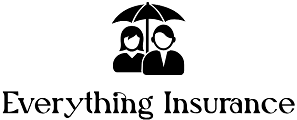There’s nothing more beautiful than making plans for eventualities and then sitting back peacefully when they happen, knowing that you’ve got it covered. This analogy can be likened to Disability insurance policy. Although no one wants to be disabled, life’s uncertainties have no respect for anyone’s wishes, so it’s necessary to make plans for eventualities.
Deciding the right disability insurance policy is a daunting process, and not everyone understands what this insurance policy means. Meanwhile, the first step to crafting a suitable insurance plan for yourself is to understand what it means and why you need it. That brings us to the million-dollar question; “what is disability insurance?”
What is Disability Insurance?
Disability insurance is that plan you fall back to when you’re involved in an accident and unable to work. The policy replaces your income in instances of any form of disability and inability to work. It ensures continuing income by paying you a certain percentage of your income until you’re back on your feet.
There are two major ways of getting this insurance coverage, either offered by an employer or purchased individually by you. In the former, your employer owns the insurance policy and pays for all the premiums, thus you enjoy free coverage for as long as you remain their employee. In the latter, you own the insurance and cover the premiums. The amount and size of the premium varies depending on certain factors like age, underlying health conditions, and the nature of your job. Overall, obtaining personal disability insurance is quite expensive, but it’s always worth it.
Why Do You Need a Disability Insurance?
Often at times, we say “it can’t happen” when in the real sense, it’s just a matter of time before it happens. The backlash of losing your job is similar to not being able to work, in each case, you have no salary and are unable to pay your bills let alone support your family. However, with solid disability insurance in place, you still get paid a percentage of your salary which can be used to cover important expenses if you become unable to work due to a disability.
What Disabilities Covered?
Let’s start by defining disability. While there are many ways to define this term, this definition by the Dictionary seems to provide a clearer view of disability: A disability is a physical or mental impairment, especially one that hinders or prevents a person from performing tasks of daily living, carrying out work or household responsibilities, or engaging in leisure and social activities.
Although a broad definition, it doesn’t specify which conditions are considered disability. This implies that the concept of disability is dynamic. Therefore, you must discuss with your insurance provider and understand their idea of “disability” before purchasing one. Ask relevant questions from your insurance broker to understand what disabilities are included in their coverage.
How to Choose the Right Disability Insurance Policy
Choosing a disability insurance policy requires careful consideration. With several options available, it can be confusing to choose the perfect one that suits your needs. This insurance coverage is necessary regardless of whether you’re working for an employer or running your business. There are several factors to put into consideration in deciding the right insurance policy that matches your needs. For instance, you need to understand the policy’s definition of disability, and then the waiting period, you might also want to consider the duration of the coverage. Amid this confusion, we will be guiding you on how to choose the right disability insurance policy that is perfect for you:
Decide Between a Personal Disability Policy or an Employer-Sponsored Policy
The first step is to decide which you need; personal coverage or employer or group policy. Making this decision will make the next steps easier. For example, if your employer is sponsoring the insurance coverage, you do not have to worry your head about which type you want or what premiums should you purchase.
That being said, the two methods of disability insurance policy seem similar, yet different. For instance in the US, the group insurance coverage offered by your employer is governed by the Employee Retirement Income Security Act (ERISA) laws, which offers limited rights to the policyholders but protect primarily the insurance company. On the contrary, personal disability insurance provides more legal rights to you as the insurance holder. Nevertheless, the affordability of the employer-sponsored disability insurance plan is a great advantage.
Understand the Policy’s Definition of Disability
This is very important as it’ll help you understand what situations are covered by this plan. For instance, some policies may define disability as when you’re unable to perform your current job due to illness or other reasons, while some believe you’re only disabled if you’re unable to perform any job at that. Overall, understanding their definition of disability is crucial.
Consider the Portability of the Policy
Portability means the ability to transfer the insurance coverage from your current employer to the next employer in the event you’re changing the job. As you might have thought, this is only applicable to employer-sponsored coverage. If it’s not portable, you will lose the coverage if you change the job and might have to obtain it again under your new employer.
Consider the Type of Coverage and Guaranteed Renewable Clause
This is also quite important. Decide between short-term or long-term disability insurance coverage. This defines how long the benefits will last if you’re unable to work. Short-term disability coverage is enjoyable for a short period, typically not more than two years. On the contrary, long-term disability coverage provides the benefit for an extended period. This may range from several years to a lifetime.
The guaranteed renewable clause assures you that your insurance provider can not terminate your policy as long as you pay your premiums. This provides an additional layer of security in your insurance policy knowing you’re secure if anything happens.
Consider the Waiting Period
The waiting period simply means the time between when you become disabled and when you begin to enjoy the benefits. But understand this; the shorter the waiting period, the sooner you start reaping the benefits of the insurance. This also depends on the type of your coverage; short-term disability starts a few weeks after a qualified disability while long-term disability may take up to 90 days in what is referred to as the “elimination period.
Determine the Amount of Coverage You Need
This is dependent majorly on the size of your income and expenditure. But generally, it is recommended to go for a coverage that replaces at least 60% of your salary. If your salary is $100,000 a year, aim for a coverage of $60,000 a year.
Final Thoughts
Disability insurance comes to the rescue if you’re in a situation that qualifies as an accident as defined by your insurance policy or by federal ERISA law if you’re under an employer-provided disability insurance policy. Thus, it is crucial to understand the concept of disability as defined by your insurer. Similarly, considering the waiting period will guide you in taking the right action if your payment is delayed.





